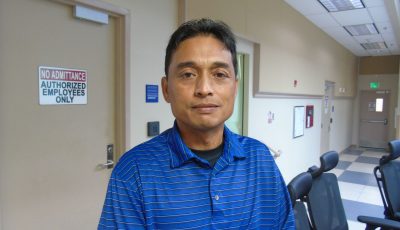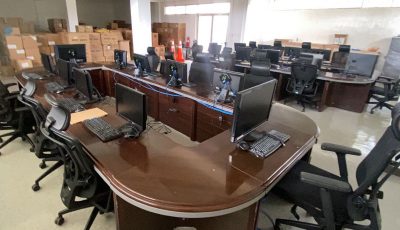HSEM monitors underwater eruption
The CNMI Homeland Security Emergency Management assured yesterday that it is aware of the recent undersea eruption near Uracas in the Northern Islands and continues to monitor this underwater volcanic activity.
According to an HSEM news release yesterday, it said that, based on the information received, it is “well aware of the recent undersea eruption on the Ahyi Seamount as it is being closely monitored by our CNMI State Warning Point” in collaboration with U.S. Coast Guard and U.S. Geologic Survey partners.
“From what our observations have shown, the data strongly suggests that Ahyi is the source of the activity, in spite of there being several other seamounts in the area. There are no local monitoring stations near Ahyi Seamount, which limits our ability to detect and characterize volcanic unrest. However, we will continue to monitor available remote hydroponic, seismic and satellite data closely,” the news release stated.
HSEM said the U.S. Coast Guard and its partners are monitoring the undersea eruption, which is taking place north of the main Commonwealth of the Mariana Islands.
An Associated Press report stated that Ahyi seamount is a large conical submarine volcano. Its highest point is 259 feet (79 meters) below the surface of the ocean. It’s located about 11 miles (18 kilometers) southeast of the island of Farallon de Pajaros, also known as Uracas.
“While there is no official safety zone currently in place, we echo the U.S. Geologic Survey’s recommendation for mariners to steer well clear of the area out of an abundance of caution. Volcanic activity can be unpredictable, and the location is extremely remote,” said the HSEM statement.
Still, mariners would want to avoid the immediate area.
“Should mariners run into issues in the region, they are encouraged to contact the U.S. Coast Guard at the first sign of trouble via VHF-FM channel 16, by calling the Joint Rescue Sub- Center in Guam at (671) 355-4824 via cellular or satellite phone, or by activating an emergency position indicating radio beacon.” said CWO Sara Muir, the U.S. Coast Guard spokesperson for Forces Micronesia/Sector Guam.
All indications are that the Ahyi Seamount began erupting in mid-October, the U.S. Geological Survey said Monday. The Northern Marianas are about 3,800 miles (6,115 kilometers) west of Honolulu.
Scientists are looking to see if the activity is shallow earthquakes or if material exploded from the crater, said Matt Haney, a USGS research geophysicist. Scientists are checking satellite data to see if there’s discolored water, which could suggest material is coming out of the volcano, he said.
“There’s nothing right now that suggests that this eruption will intensify and become a large eruption,” Haney said.
Activity from an undersea volcanic source was picked up last month by hydroacoustic sensors some 1,400 miles away (2250 kilometers) at Wake Island.
With help from the the Laboratoire de Geophysique in Tahiti and data from seismic stations in Guam and Japan, scientists analyzed the signals to determine the source of the activity was likely Ahyi Seamount, the USGS said in a statement.
Activity has been declining in recent days, the statement said.
The seamount is part of the Mariana Volcanic Arc, which is a chain of over 60 active volcanoes stretching over 600 miles west of and parallel to the Mariana Trench, the world’s deepest point. (Saipan Tribune/With AP)



























